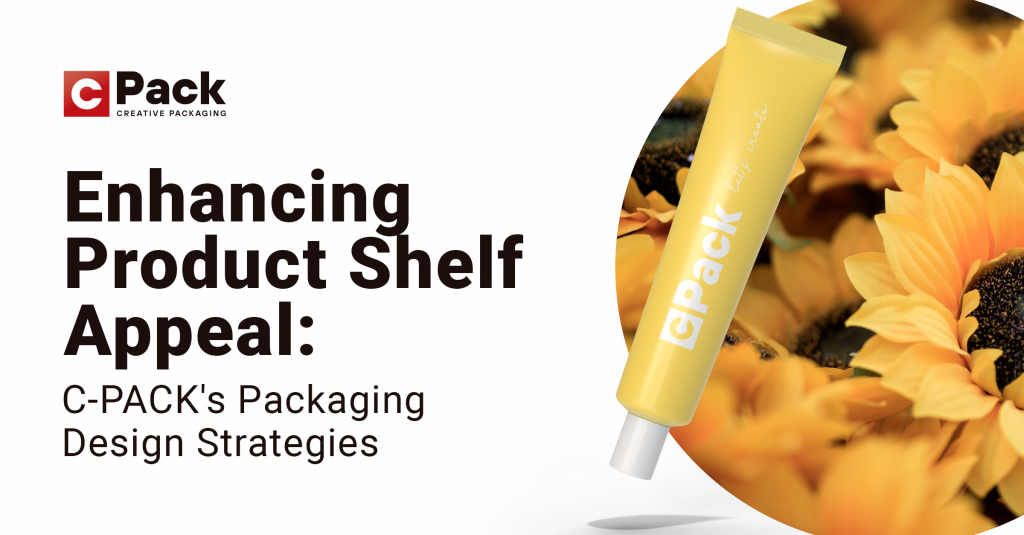
The Importance of Packaging Design
You’ve got a great product. But is it getting the attention it deserves? In today’s competitive market, your product’s packaging is often the first thing consumers see. It’s your silent salesperson. C-PACK understands this and has developed innovative packaging design strategies to enhance your product’s shelf appeal.
The Psychology of Color
Color isn’t just about aesthetics; it’s a powerful tool that influences consumer behavior. C-PACK employs color psychology to make your product stand out. Bright colors like red and yellow grab attention, while blues and greens evoke trust and calmness. By understanding your target audience, C-PACK selects the perfect color scheme for your product.
Material Matters: Sustainability and Quality
In an eco-conscious world, the material of your packaging can make or break a sale. C-PACK focuses on using sustainable, high-quality materials that not only look good but also align with consumer values. This strategy not only enhances shelf appeal but also builds brand loyalty.
Functionality and User Experience
A beautiful package is great, but what about its functionality? C-PACK designs packaging that is easy to open, reseal, and store. This focus on user experience ensures that customers will not only buy your product but also enjoy using it, leading to repeat purchases.
Typography and Information Layout
The way information is presented on your packaging is crucial. C-PACK uses clear, easy-to-read typography and an intuitive layout to convey essential details. This ensures that consumers can quickly find what they’re looking for, be it ingredients, usage instructions, or benefits, thus aiding in the decision-making process.
The Power of Branding
Consistency is key when it comes to branding. C-PACK ensures that your packaging design aligns with your brand’s identity. From the logo placement to the color scheme, every element works in harmony to create a cohesive look. This strengthens brand recognition and builds trust among consumers.
Packaging design is more than just a box or a wrapper; it’s a strategic tool for enhancing product shelf appeal. By focusing on elements like color psychology, material quality, functionality, typography, and branding, C-PACK offers a comprehensive approach to packaging design. Elevate your product’s shelf appeal and watch your sales soar with C-PACK’s innovative strategies.
What are the key elements of effective packaging design?
C-PACK focuses on five key elements for effective packaging design: color psychology, material quality, functionality, typography, and branding. By integrating these elements, C-PACK creates packaging that not only looks good but also resonates with consumers, enhancing the product’s shelf appeal.
How does color psychology affect product packaging?
C-PACK employs color psychology as a strategic tool in packaging design. Different colors evoke different emotions and behaviors in consumers. For example, red and yellow are attention-grabbing, while blues and greens evoke trust and calmness. C-PACK carefully selects the color scheme based on the target audience to maximize impact.
Why is sustainable packaging important for consumer appeal?
In today’s eco-conscious market, consumers are more likely to choose products with sustainable packaging. C-PACK understands this trend and focuses on using high-quality, sustainable materials. This not only enhances the product’s shelf appeal but also aligns with consumer values, building brand loyalty in the process.
How does packaging functionality impact user experience?
Functionality is a critical aspect of packaging design that C-PACK takes seriously. The company designs packaging that is easy to open, reseal, and store, enhancing the overall user experience. This focus ensures that customers not only buy the product but also enjoy using it, which often leads to repeat purchases.
What role does branding play in packaging design?
Branding is integral to C-PACK’s packaging design strategy. The company ensures that all elements, from logo placement to color scheme, align with the brand’s identity. This creates a cohesive look that strengthens brand recognition and builds trust among consumers.

